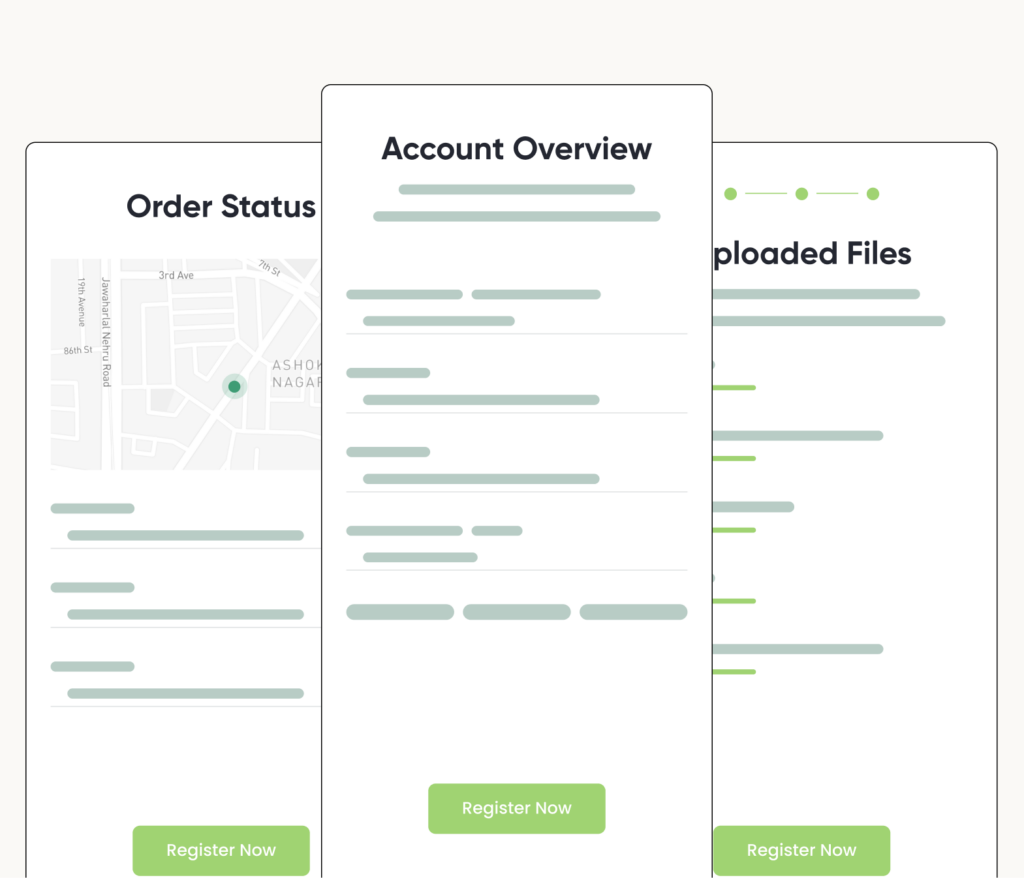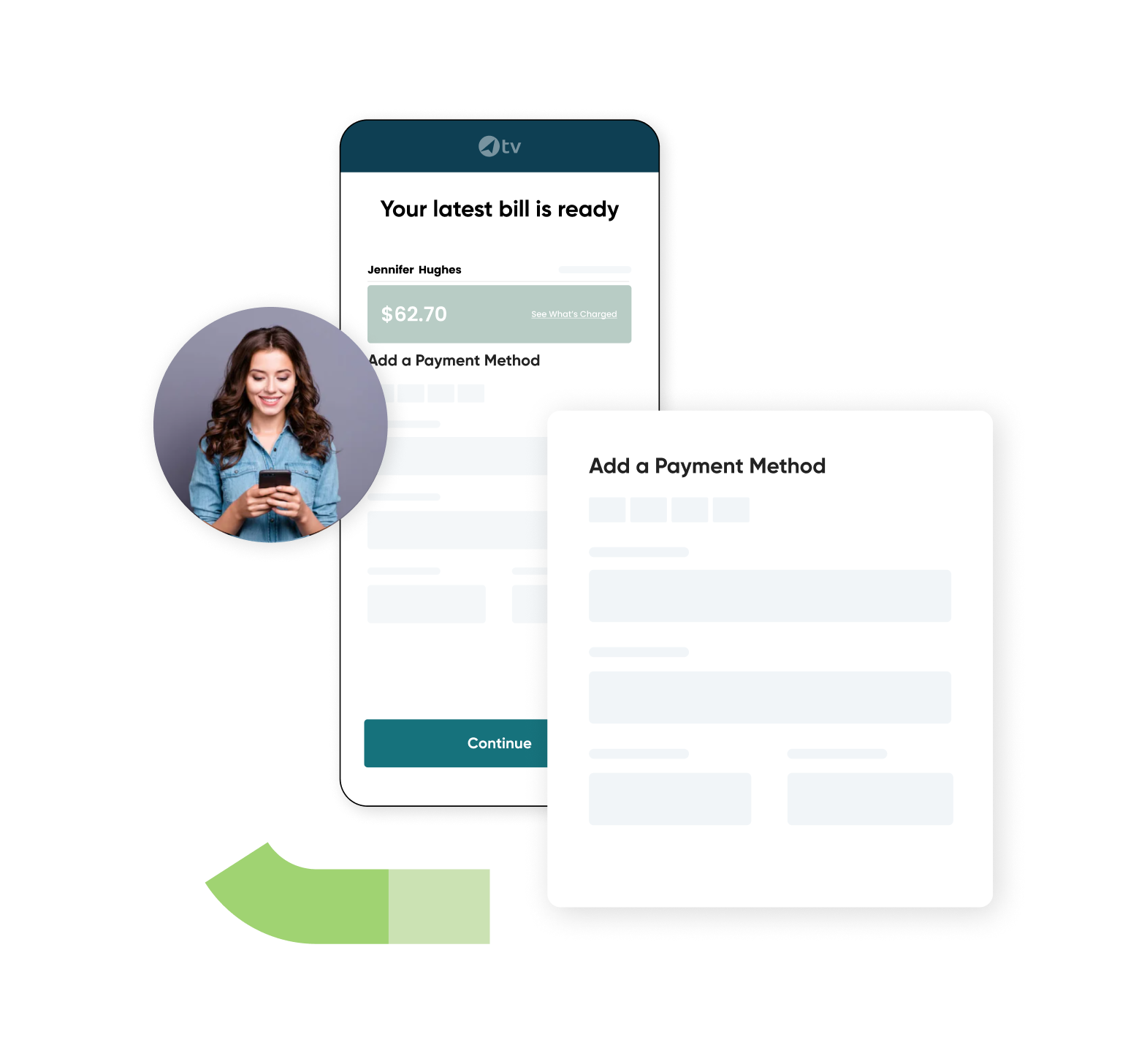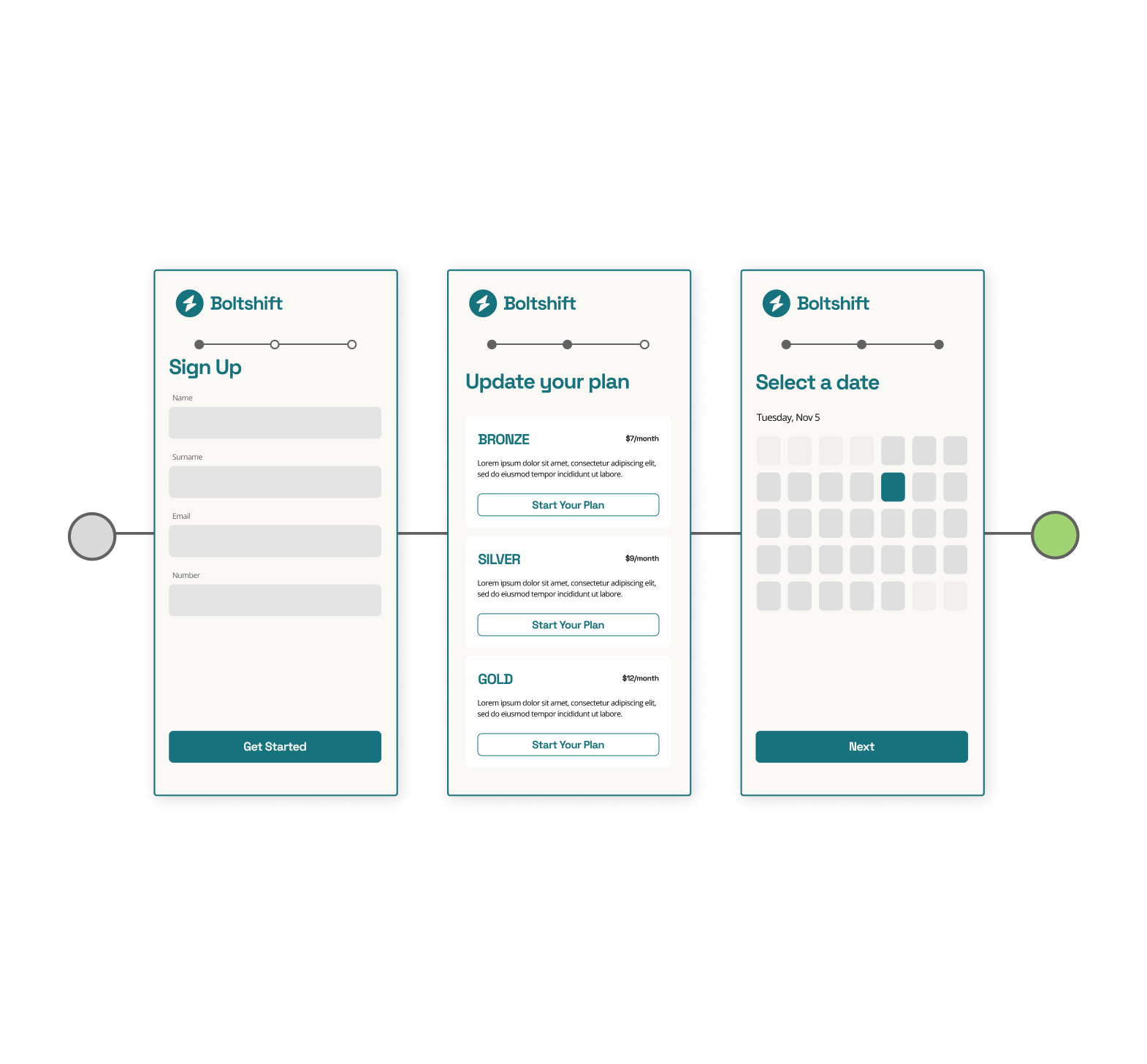Digital Self-Service
Streamline CX operations and boost satisfaction with powerful self-service experiences that solve problems quickly and easily. Empower customers with simple tools to resolve issues, access information, and complete transactions on their own. Give customers the options they want as you relieve pressure on sales and support staff.

Easily build self-service experiences, deploy to any channel
Free customers from support challenges and long waits with digital self-service
Self-service in any channel
Deliver secure self-service tools in any channel you deliver service in today – web, chat, call center and more


Frictionless customer journeys
Streamline any step of the customer journey from onboarding to account updates, billing to renewals
Customer service automation
Streamline and automate your frustrating, manual customer processes with 92.3% completion rates


Intuitive, guided workflows
Simple step-by-step workflows help customers select products, provide information, and resolve issues
Customer-obsessed leaders love Callvu
"Callvu allows us to quickly address customer pain points with easy-to-use digital self-service options that cut support costs and increase customer satisfaction."

David Williams
Vice President, Automation, AT&T"Callvu powers our Visual Call Center, giving customers the option to self-serve via SMS. 400,000 customers now choose self-service monthly, and the figure continues to climb."

Anca Radu
Product Manager, eCommerce, BT"Callvu has enabled MOST Technologies and our clients to shorten development time by 90% for digital collaboration experiences between customers and agents."

Omry Genossar
Vice President, Products, MOST Technologies








Want to see more? No problem.
Get in touch with our team or create a free account with just your email.
Digital Self-Service FAQs
What is Digital Self-Service?
Why is Digital Self-Service Valuable?
What are Best Practices for Digital Self-Service?
Digital Self-Service Customer Experience Best Practices
- Personalized Experience: Enhance customer loyalty and the sense of connection with your customers by personalizing the Digital Self-Service experience. Include tailored content, such as greeting the customer by their first name and leveraging customer data to deliver customized reminders or product recommendations.
- Omnichannel: Deliver Digital Self-Service options across multiple channels to engage customers at their preferred touchpoint and create a unified, seamless brand experience that enhances loyalty.
- Feedback Loop: Continuous improvement relies on feedback from customers, and Digital Self-Service makes it extremely easy to integrate NPS and CSAT surveys within the micro-journey to confirm the effectiveness of the experience or quickly identify opportunities for improvement.
Digital Self-Service Technology Best Practices
- Replicable and Scalable Workflows: Automating end-to-end business processes on a powerful and intuitive drag-and-drop visual canvas that makes it easy for anyone to build, replicate, and modify custom micro-journeys.
- API Integration: With a low-code API interface, easily connect Digital Self-Service solution experiences to any existing back-end platforms and business processes.
- AI Integration: Leverage the latest AI technology to implement a powerful AI search tool that understands and responds to customers with customized, accurate, and helpful information.
A Digital Self-Service solution that includes these customer experience (CX) and technology best practices accelerates the adoption of customer self-service to reduce contact center costs.
How Does Digital Self-Service Help Companies Reduce Costs?
Digital Self-Service helps companies significantly decrease cost-per-call (CPC) by deflecting inbound calls to digital self-service, reducing call volume, and improving important contact center metrics such as first-call resolution (FCR) and average handle time (AHT).
Digital Self-Service also helps companies reduce overall costs by avoiding points of friction that cause customer frustration and abandonment, such as long wait times. With Digital Self-Service, customers can skip the waiting for an agent and easily accomplish tasks on their own, improving customer satisfaction (CSAT) and customer retention, reducing customer turnover, and increasing customer lifetime value (CLV).
How Does Digital Self-Service Improve Customer Satisfaction and CSAT?
Digital Self-Service improves customer satisfaction and CSAT by freeing customers from long waits and delivering seamless customer journeys that make it easy for customers to solve problems quickly, at any time, and at their own pace without needing to engage with a customer service agent. In 2023, the Salesforce State of the Connected Customer survey reported that 74% of customers expect to be able to do anything digitally that they can do in person or by phone,* but there are common barriers to digital adaptation, such as the requirement to download an app, create an account, and remember login information. Leading Digital Self-Service solutions, such as Callvu, eliminate those barriers and meet consumer expectations by delivering secure Digital Self-Service journeys in any channel.
How Does Digital Self-Service Take Pressure Off Contact Centers?
What are Some Common Use Cases for Digital Self-Service?
Common use cases for Digital Self-Service are frequent and repetitive customer service tasks that customers can easily accomplish on their own without agent support. Digital Self-Service micro-journeys are extremely successful at improving customer satisfaction by empowering customers to easily access personal information such as payment history and balance statements and manage common account tasks such as scheduling appointments, adjusting subscriptions, making payments, resetting a password, changing an address, updating a credit card, or transferring the account owner.
Leading Digital Self-Service solutions such as Callvu enhance customer service offerings with advanced capabilities, such as easy access to real-time status information on shipping, returns, exchanges, and claims. I can also replace multi-step forms and applications with ultra-streamlined workflows and integrated functionality to instantly verify data.
Where Can I Get More Information on Digital Self-Service?
Our team would be pleased to discuss the Digital Self-Service use cases that will improve your customer satisfaction and reduce contact center costs. Please fill out this form or visit the Callvu homepage.